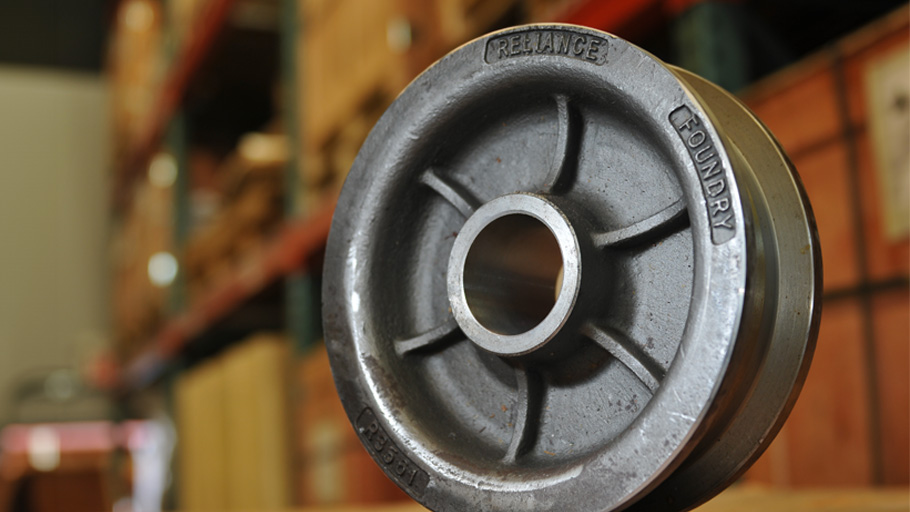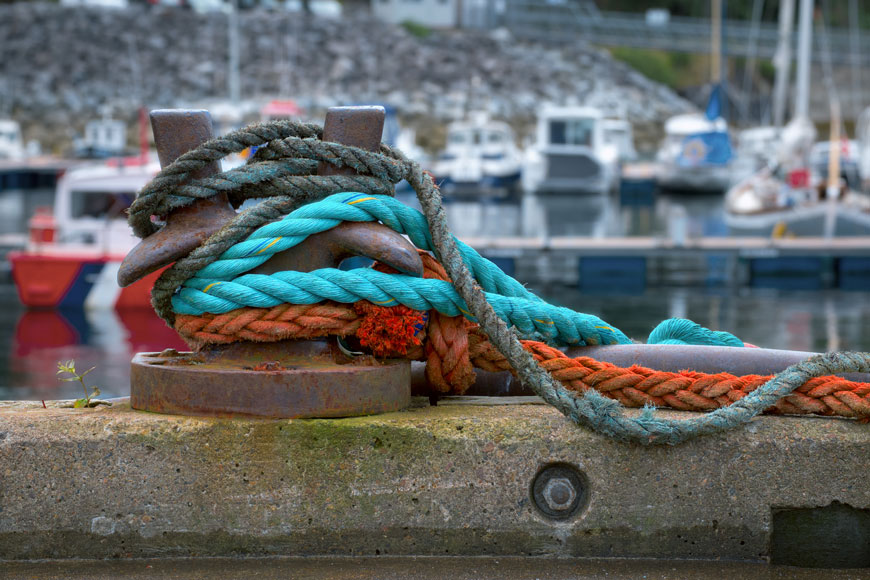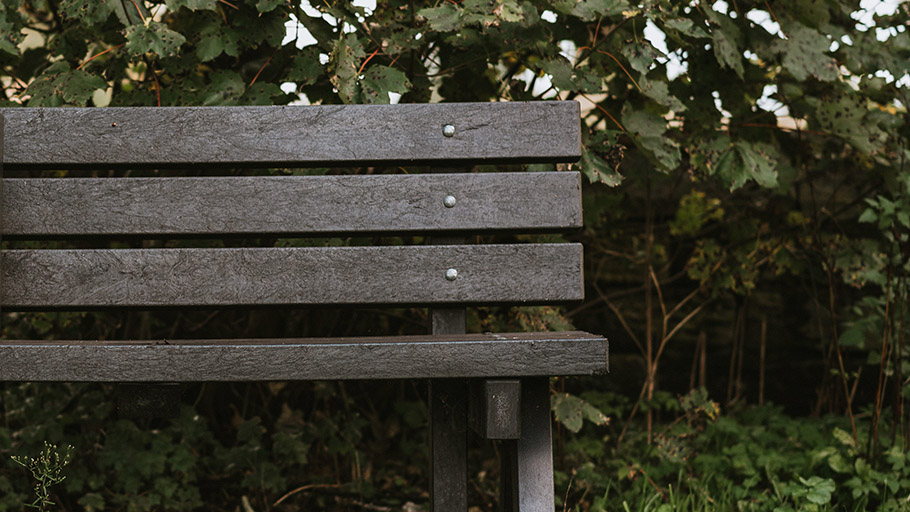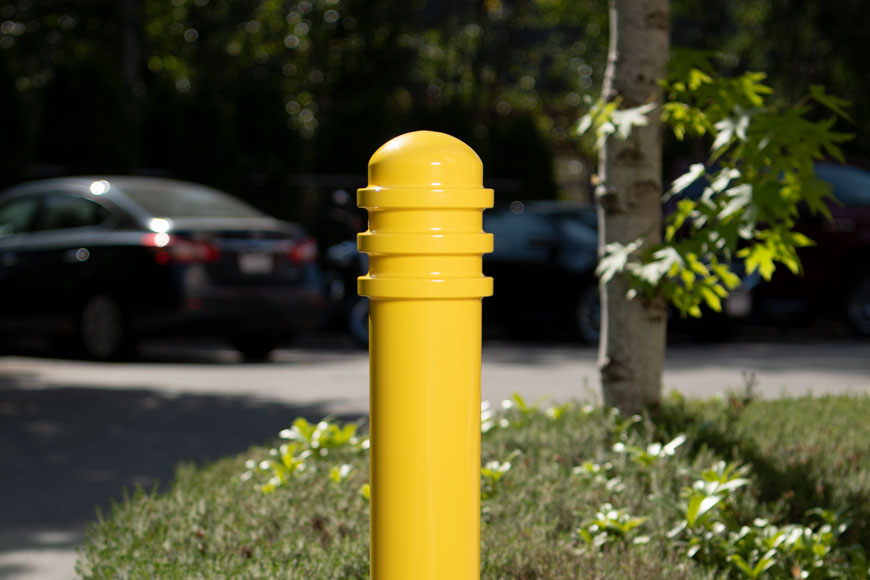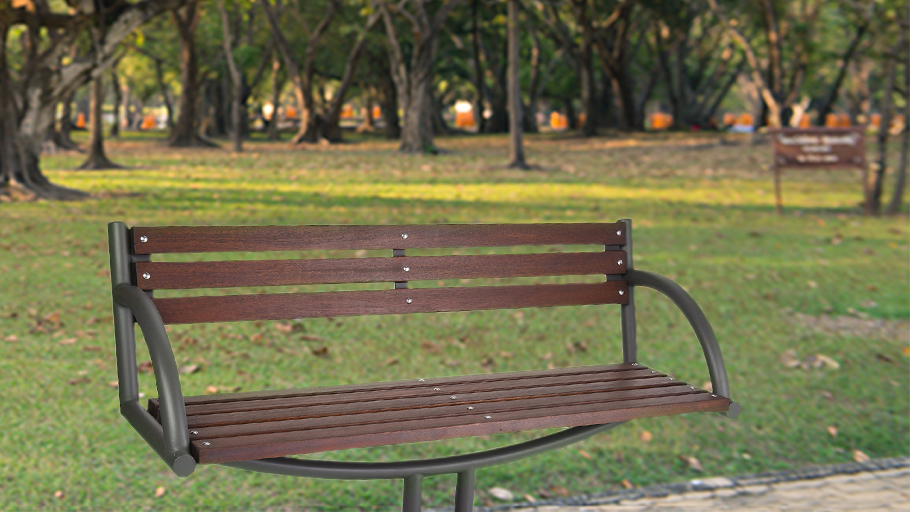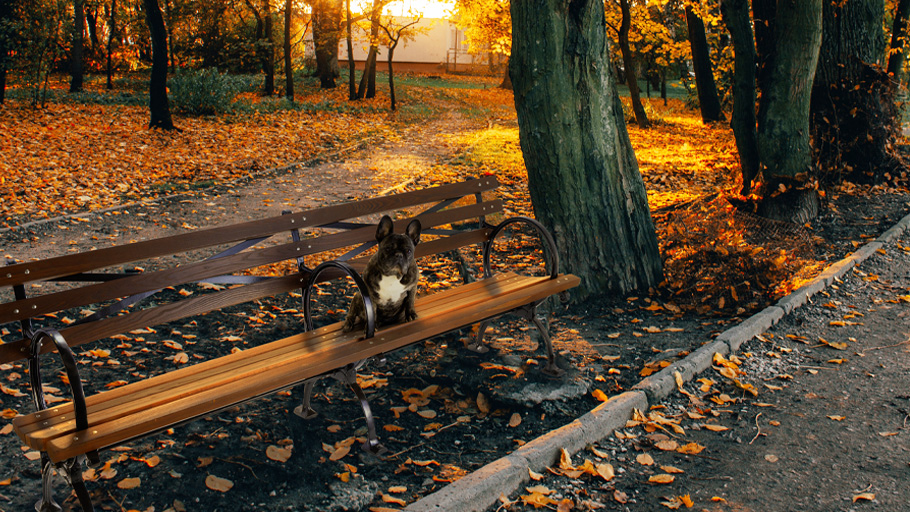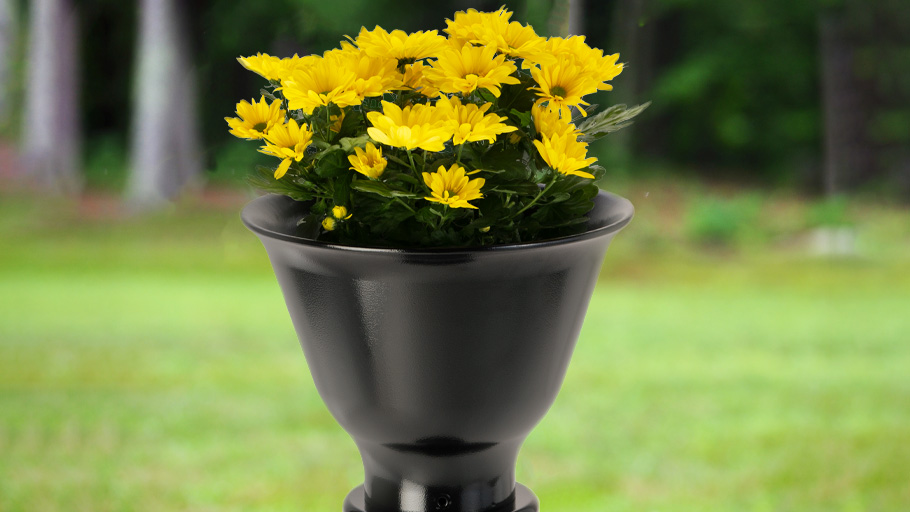Whether Béton brut, smooth and polished, or glossy aggregate, concrete can be beautiful
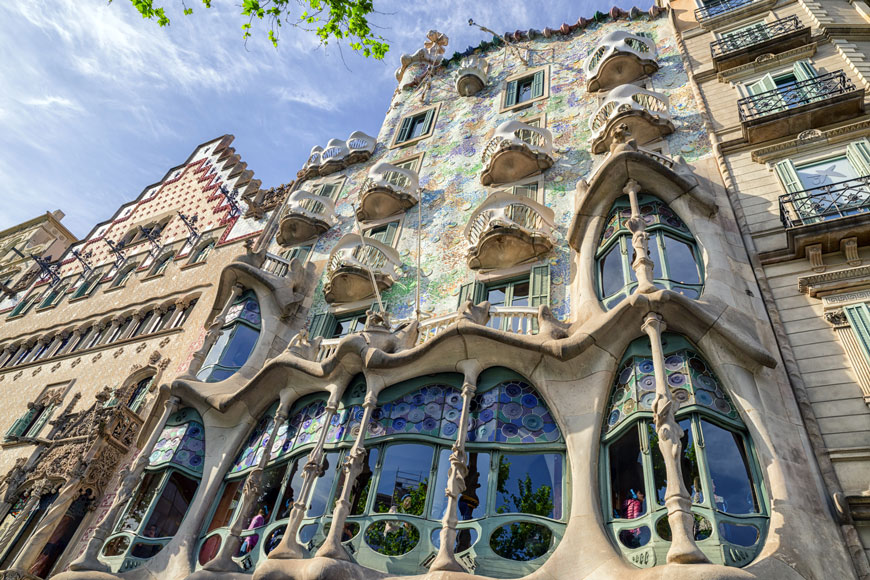
Concrete is the supportive material scaffolding most modern construction, providing solid foundations on which to build. In most situations, it is utilitarian and unremarkable, and will be clad or decorated rather than emphasized. Yet certain building and design styles give concrete pride of place. Concrete can be used as the antithesis of aesthetic flourish, in design philosophies that see ornamentation as a distraction from utility. Yet other styles use decorative concrete to create shapes and textures to convey an artistic imagination. When choosing site furnishings like bollards, being aware of design choices made by the architect can help a facilities director enhance or complement the design.
Concrete is a material made of an aggregate mixed with a cement. It’s an ancient discovery, used by the Bedouins as far back as 6500BC. For 700 years, the builders of the Roman Empire used concrete. However, after the Roman Empire’s fall, the material fell into disuse, with stonework and masonry taking over for the construction of buildings.
Concrete was rediscovered as a building material in the 14th century, but since other techniques were well known and effective, it wasn’t until the 1800s that concrete reemerged. The shift was the discovery of reinforced concrete and the widespread production of steel. Steel and rebar could provide tensile strength that concrete lacks. Concrete production is now one of the hallmarks of modern society. Its omnipresence and utility has led to architects and designers playing with the material and using it aesthetically.
Architectural styles highlighting concrete
In 1958 Le Corbusier, a Swiss-French architect, became a pioneer in using reinforced concrete to build. Le Corbusier believed strongly in Modernism, which emphasized building for function rather than form. Although the architect considered himself a Modernist, he is also an important inspiration to a style called Brutalism. Le Corbusier designed the Unité d’habitation, now an UNESCO heritage site, that became an important Brutalist structure. Corbusier is quoted as saying “The desire to decorate everything about one is a false spirit and an abominable small perversion.”
Modernist architecture and design
Modernism’s prioritization of function has made the biggest impact of any style philosophy on architecture and design throughout the 20th century. Modernist buildings rely on reinforced concrete, steel and iron, and plate glass for its approach. Foregoing the fancy ornamentation of previous eras and bringing the sleek lines of Art Deco to even more sharp effect, modernist architecture hit the big time in the 1930s. The design tends towards flat roofs, light colors, asymmetrical compositions, cubic or cylindrical shapes, and an absence of ornament or moldings. Concrete can be left exposed but will usually be mixed with ash for lighter coloring if so.
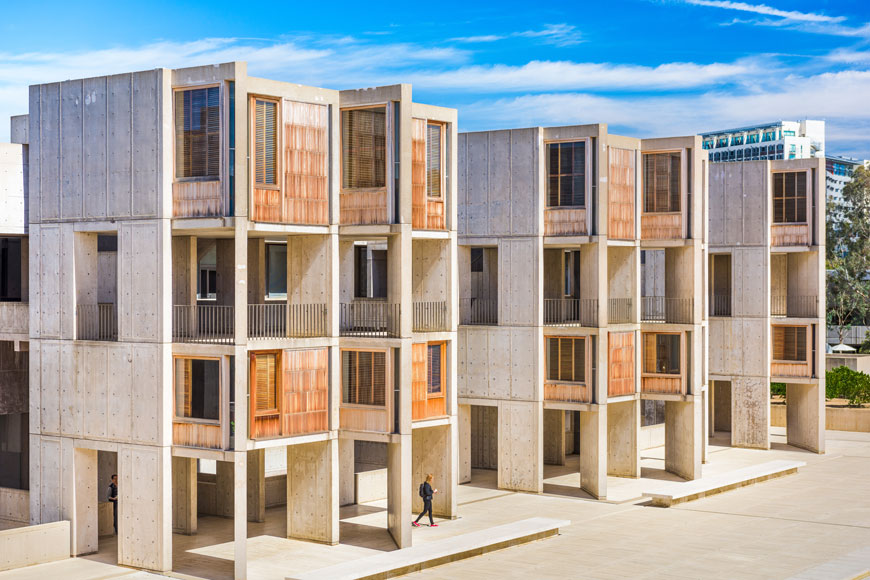
The Salk Institute in California is considered one of the most important Modernist buildings. The architect, Louis Kahn, chose exposed concrete, teak, glass, and stone for durability and simplicity of function. Due to the use of raw concrete, this architectural piece is sometimes considered to be in the Brutalist style, although (like Le Corbusier), Kahn’s work was generally Modernist.
Modernist bollards or other site furnishings will also prioritize form over function. Concrete can be used, but also stainless steel, to match light color palettes. Simple geometrical forms are an ideal modernist choice: rectangular columns, plumb lines, and simplicity that does not call attention to itself.
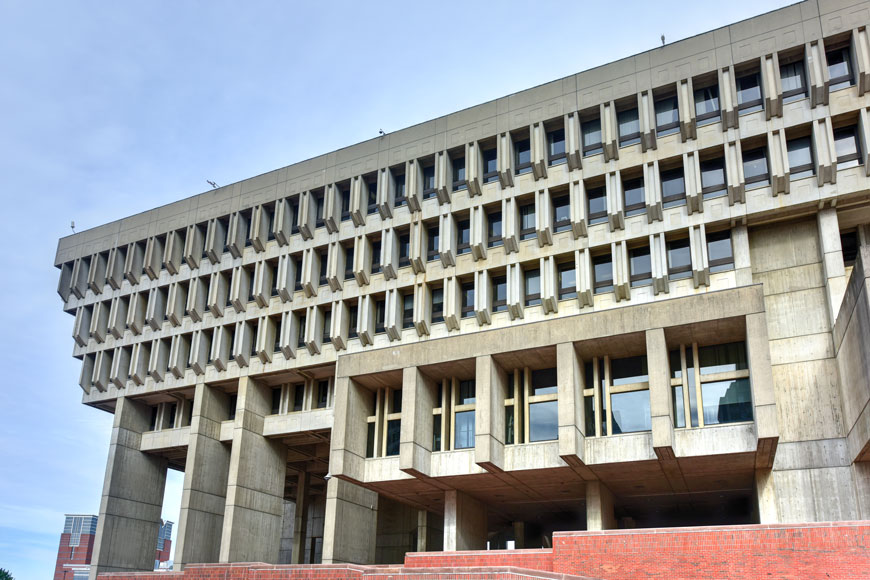
Brutalist architecture and design
As with the Salk Institute and with the Unité d’Habitation, Brutalism can be categorized as a subset of Modernist architecture. It continues to prioritize function over form.
However, Brutalism actively celebrates and is dedicated to the use of raw concrete as the exposed material, the finish on the building. The term “Brutalism” comes from the French béton brut meaning “rough concrete”.
Architects who worked exclusively in the Brutalist style developed other common characteristics. Unlike many Modernist buildings, Brutalist buildings often have small windows compared to the other parts of the facade. Massive and heavy looking structures are characteristic of Brutalist architecture, with rough and unfinished surfaces part of the aesthetic, rather than being only a result of function. In some Brutalist buildings, the choice of grain on the forms used to make the concrete is of particular interest and serves the place of other finishes.
Boston City Hall is a prime example of Brutalist architecture in all these elements. Unlike the Salk Institute, which though made of raw concrete has a light, open aesthetic, Boston City Hall shows the more prominent hallmarks of weight and massiveness that often indicate a Brutalist sensibility. Brutalist site furnishings might include heavier pieces, including weightier raw concrete bollards. Unlike other Modernist approaches, simple plumb lines may be less important than overall structural weight.
Design and architectural style continued to change and develop after the early Modernists set out their simplified vision. Concrete has become a vehicle for whimsical, creative ornamentation as well.
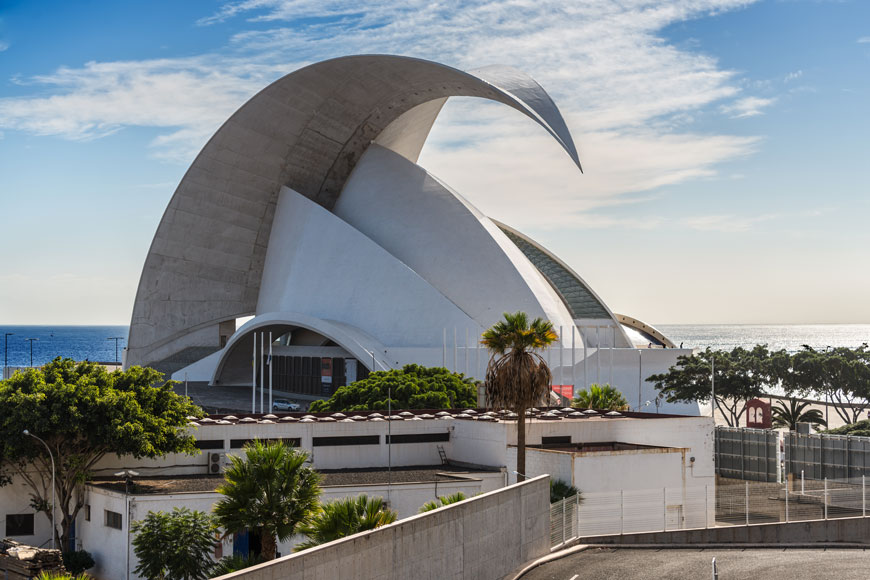
Expressionist architecture
Expressionism is a child of Modernism, but moves back toward the artistic and poetic, without returning to the ornamental clichés of the past. Like Modernist buildings, Expressionist structures often are formed from concrete, steel and glass. However, these concrete edifices are built to elicit a reaction from the viewer. They are intentional works of art.
Expressionism often relies on distortions to make an impact, and so the simple geometries of the original modernists are often thrown over for more swooping, circular forms. The Opera Hall at Tenerife in the Canary Islands is an example of concrete being used as a building material in curving, poetic ways.
The concrete in Expressionist architecture might be left raw, whitewashed, painted, or polished, depending on the site. The clean lines of the architecture suggest simple site furnishings: more geometric than Brutalist architecture might need, in a variety of materials.
Decorative concrete as architectural accent
Although most buildings will not be as impressive as these masterpieces of Modernist, Brutalist, or Expressionist architecture, they still make an impression on the landscape. The aesthetic of everyday buildings makes more of an impact on our lives than destination architecture. Bollards, benches, and other site furnishings can be chosen to enhance or complement a building’s effect.
Structurally, most security bollards are made of steel pipe and concrete. Like most architecture, they use concrete in utilitarian ways, to provide impact protection against cars. Like most buildings, they can be clad in all sorts of decorative ways.
However, as with architecture, concrete can also be used as a featured design element.
Raw concrete bollards may work on Brutalist or Modernist sites where exposed concrete is part of the architectural style. Specially shaped concrete can make traffic posts into objects of form or whimsy, whether expressionist or created in a theme. Finishing, like highlighting the aggregate in stone surfaces, can make concrete bollards fit in with more natural environments. Creating memorable spaces can be done on a small scale through careful stewardship of aesthetic. Decorative concrete is an option not to be overlooked!


